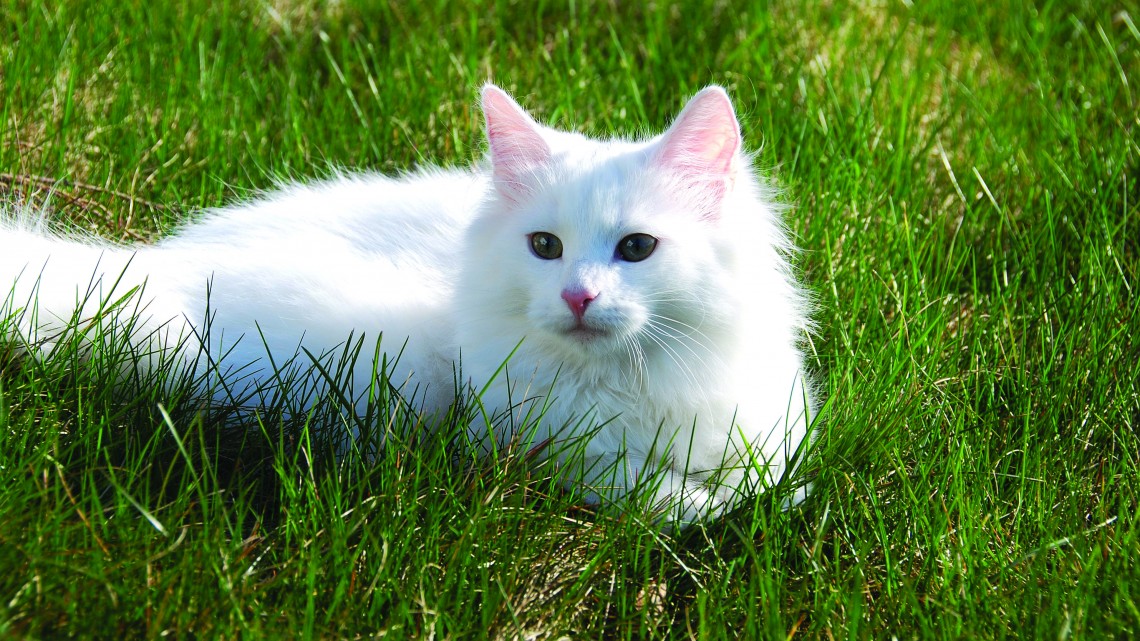Want to help the feral cats in your community? Follow these five steps to a successful program.
Feral cats are found in just about every community. They live in back alleys, behind restaurants and shopping centers, in garages, ravines and old warehouses. The descendents of lost or abandoned domestic cats, feral cats become wild, generally shy away from human contact, and tend to live in colonies.
Although feral cats breed prolifically, they lead difficult lives when left entirely to their own devices. They suffer from high kitten mortality rates and short life spans. They are often regarded as a nuisance by neighboring humans and may become targets of hostility. On the bright side, many kind-hearted animal lovers want to improve the quality of life for these cats. It’s a worthy and rewarding goal, as long as you educate yourself first.
TNR is the key Trap-Neuter-Return (TNR) is the best method for managing feral cat colonies. It involves live-trapping the cats, having them spay/ neutered and vaccinated for rabies, then returning the wild ones back to their original territory.
Cats returned to the colony are fed and provided with shelter by a caretaker who also monitors the colony for any new cats or problems. Over time, the TNR approach gradually lowers the number of cats in the colony.
Getting started
Here are five steps to follow:
1Contact your local Humane Society or animal shelter and find out if there are feral cats or programs already operating in your area. They may be able to assist you with training, equipment, low-cost spay/neuter referrals and hands-on assistance.
2If there’s nothing in your area, educate yourself before working directly with the cats. Visit the Neighborhood Cats website (neighborhoodcats.org) and order a copy of The Neighborhood Cats TNR Handbook. This guide covers all the basic steps you’ll need to manage a colony of cats, including trapping, working with the local community, feeding, winter shelter and more. Another good resource is Alley Cat Allies (alleycat.org).
3Find a veterinarian to work with – one who will understand you are doing a community service and will give you a discount on spay/neuter. Again, check with local shelters for low cost spay/neuter clinics. If one exists, find out if they’ll handle feral cats. If there are none, then your best bet is to approach your own veterinarian. Explain your project and ask for a special rate. You can also try contacting SPAY/USA (spayusa.org) and find out if they have a veterinarian in your area who works with ferals.
4Research local laws before launching a TNR program. Very few communities make TNR illegal, but there may be laws that unintentionally have this effect. For example, there may be an ordinance in your town that prohibits feeding any animal outdoors. Or a law may require all “owned” cats be licensed or kept confined – and you’re defined as an “owner” if you “feed, shelter or harbor” a cat. Talk to municipal officials about gaining an exemption for TNR colonies.
Before approaching officials, however, you’ll need to learn more about the policies behind TNR and how it can reduce overall numbers of cats, lower intake rates at local shelters, eliminate nuisance behavior and address public health and wildlife concerns. Neighborhood Cats offers materials to help you learn more about these policies, and about persuading local officials to allow TNR.
A growing number of com- munities have passed laws that specifically authorize TNR and regulate its practice. If you’re interested in introducing TNR on a large-scale basis, order a copy of Implementing a Community Trap-Neuter-Return Program from humansociety.org/feralcats.
5Once you are comfortable with what you are doing, you can effectively perform TNR. After this, the long-term care of the colony begins. This can last for the lifetime of the cats. How long they survive depends on the type of conditions in which they live, such as traffic or climate. Either way, the commitment is a lengthy one, so it’s important to enlist others to help you. This protects the cats in case you move or something happens that prevents you from feeding and watching out for them.
Preferably, any friendly cats or kittens that might be easily socialized are removed from the colony and placed for adoption.
Managing a feral cat colony can be challenging, but it offers many benefits. You’ll know you spared countless kittens difficult lives and improved the overall situation in your neighborhood. You’ll get to know the cats in the colony and the cats will get to know you. Even though they may never let you touch them, they’ll give you endless rewards for your care and compassion.






No Comment